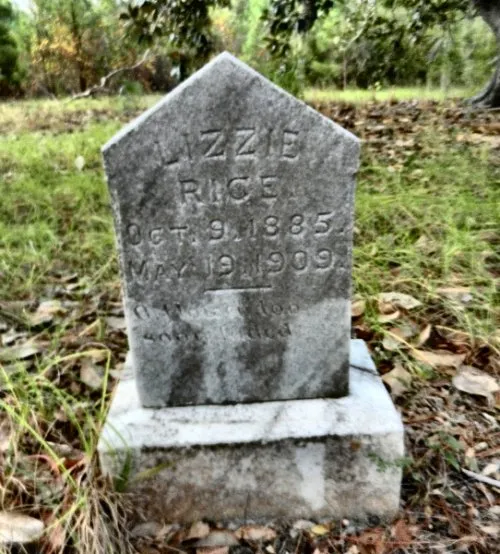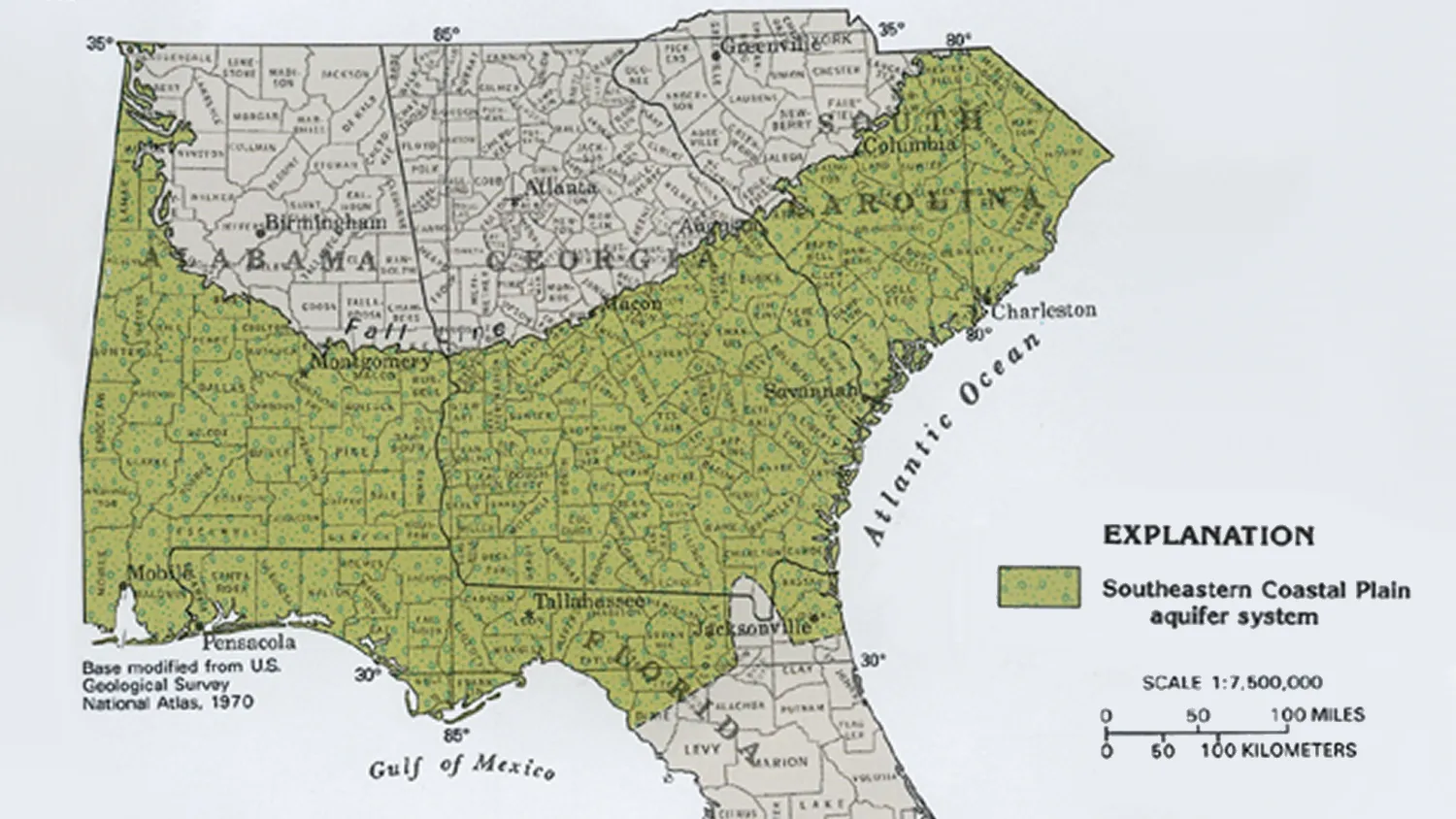Some of my ancestors lived in a very rural area that was all farming land, which was their livelihood. The entire county of 825 square miles (2136 square kilometres) in which they lived has a population of 6,618 people today, but the population was only 637 people in 1850 when my ancestors lived there.

In the early 2000s, I made an attempt to visit this cemetery, myself. Few cemeteries were online in those days and this one definitely had not been cataloged when I wanted to visit. All those years ago, I had enough trouble finding the exact location of this cemetery since it is so small, so remote, down dirt roads not often traveled, and on private land. I went with a friend who drove her car and I acted as navigator, watching for landmarks, consulting maps, and making sure we were on the right track during the trip.

The region known as the Southeastern Coastal Plain (which stretches into North Carolina, Virginia, Mississippi, and Louisiana, in addition to what is shown in the map, above) has much soil that is covered in fine sand, often finer in grit than most beaches and typically more white in color. Access to the cemetery can be gained only going down dirt roads. At the time of our attempt, the sand covering the roads was very dry, loose, and deep. Two or three times, the car almost bogged-down in the sand and nearly became stuck, so we had to finally abandon the trip, much to my great dismay. We realized that a truck or Jeep would probably be required, perhaps with 4-wheel drive. Looking carefully at the map later, I realized we were probably only 2–2.5 miles (3–4 km) from the cemetery when we had to turn around and leave. If I had realized it at the time, we might have been able to pull the car to the edge of the dirt road and walk, but we didn't know (and walking in that deep sand for such a distance would have been difficult, anyway). 🙁
I had no clue what to expect had I been able to complete my trip. I knew the cemetery was on private land, but would my access be challenged by anyone? Maps suggested there were no longer any houses on the property, and the land appears to now be owned by a hunting/gun club (according to the signs we saw), but there was no building nearby where we could talk to anyone. I also had no idea whether the cemetery was maintained so that one could walk through it, or whether it would be overgrown with brambles and weeds. I did not know how large it was, although the markings on the map suggested it was quite small.
Thankfully, I was finally able to "visit" the cemetery, although a decade later, in a virtual manner on the Find a Grave website. A kind soul who was able to visit the cemetery photographed all the gravestones and placed them on the site! Through that site, I have spent many hours over the years exploring the graves of quite a number of family members in other counties and states, and using the information to expand my family tree and correct a few discrepancies. Via Find a Grave, I learned that there are only fourteen graves in this particular family cemetery (but many more in another family cemetery a couple of counties over).
Life expectancy was low in those days, especially among people who lived in rural areas. My mother's parents had one baby that did not survive; I never learned whether the child was stillborn or died soon after birth, but I have visited her little grave marker. There was also another child in my mother's family that died when he was 11 years old. In the early 1900s when few families were able to afford automobiles (especially in rural areas), the child complained of intense pain in his lower abdomen. So, my grandfather hitched the mule to the farm wagon and tried to hurry the child to the hospital in the nearest town, about 12-miles (19 km) away. Along the route, however, his appendix burst and he died. All of this happened before my mother was born, but he would have been an older brother to her, had he lived.
Another story that I recently learned concerned some family members in the early 1800s that were forced to move from an area because of an outbreak of cholera. Because cholera often arises from an unsafe water supply, moving to another area was the only solution available at the time. [source]
Among those in the family cemetery, only a few adults lived into their 40s, 60s, 70s, or 80s because of problems such as those mentioned above (disease, lack of ready access to medical care) as well as the dangers of living in a rather untamed, rural area. There was one infant that died at age 0–1 (only the year of birth and death are carved on the stone, so we don't know how many months the child lived), another child died around the age of 6–7, another died at age 9–10, another at age 13–14, another at age 15–16.
And then there is Lizzie...
Thirteen of the fourteen graves were utilized for my direct ancestors and a neighboring family, so all thirteen of those graves bear surnames beginning with "H" or "S" (actual names withheld for privacy reasons). Lizzie, however, has the surname of Rice, totally different than all the others. She lived from 1885 to 1909, making it through her childhood & teenage years, then died at the age of 23. 😕
Unfortunately, I do not know Lizzie's story. I can think of several possibilities for her being buried in a family plot among people with differing surnames. Lizzie's parents might have died and someone in the "H' or "S" family took her in... or she may have been hired to provide additional help on the farm and grew close to the family... or she might have been disowned by her family and taken in... or she might have been a runaway, fleeing an abusive home life and was taken in... or... so many possibilities...
It warms my heart, though, that despite her circumstances, someone took her in, loved her, and gave her a decent burial when the time came. And I know she was loved because on her gravestone, beneath the dates of her short life, are the words: "A flower too soon faded." Rest in peace, Lizzie.








02-Nov-2020
Return from Rest in Peace, Lizzie to 𝕜𝕚𝕥𝕥𝕪's Web3 Blog

